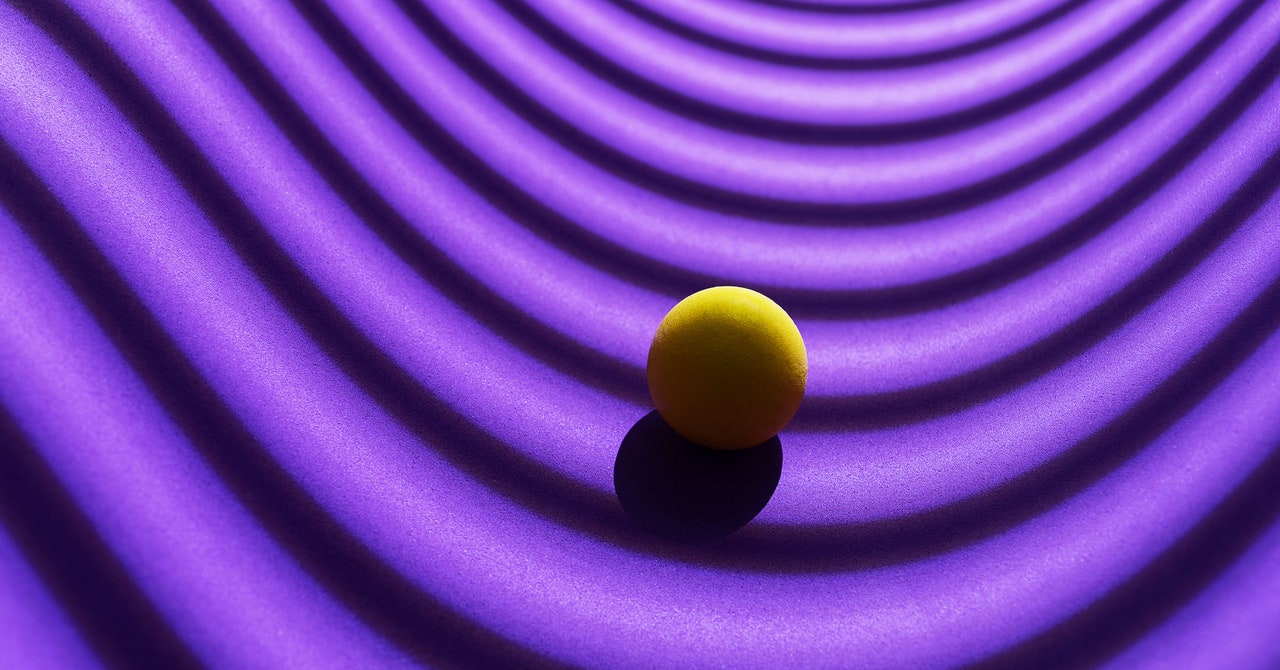
In the PYP experiment, the machine learning algorithm was given data from multiple nearly-identical proteins that had been imaged in sequence. (Researchers couldn’t reuse the same protein, because they get damaged by the x-ray.) The AI extracted the details of the process without the blurriness of the x-ray flashes, and it uncovered what the blur had been obscuring. Remarkably, these images showed how electrons inside the protein move within frames that are only femtoseconds apart. These movies—which the team later slowed down enough to allow the human eye to track the change—show electrons moving from one part of the protein to another. Their motion inside the molecule indicates how the whole thing is changing its structure. “If my thumb moves, then the electrons inside of it have to move with it,” Ourmazd offers as a comparison. “When I look at the change in the charge distribution [of the thumb], it tells me where my thumb was before and where it has gone.”
The protein’s reaction to light has never been observed in such small time increments before. “There’s a lot more information in datasets than people generally think,” Ourmazd says.
To better understand the motions of electrons, the Wisconsin team worked with physicists at the Deutsches Elektronen-Synchrotron who performed theoretical simulations of the protein’s reaction to light. The electrons and atoms within the protein have to move according to the laws of quantum mechanics, which act as something like a rulebook. Comparing their results to a simulation based on those rules helped the team understand which of the allowed moves the protein was performing. This brought them closer to understanding why they saw the motions they did.
The union of quantum theory and AI encapsulated in the new work holds promise for future research into light-sensitive molecules, says Fromme. She emphasizes that a machine learning approach can extract lots of detailed information from seemingly limited experimental data, which may mean that future experiments could consist of fewer long days doing the same thing over and over in the lab. Mukamel agrees: “This is a most welcome development that offers a new path for the analysis of ultrafast diffraction measurements.”
Coauthor Robin Santra, a physicist at the Deutsches Elektronen-Synchrotron and the University of Hamburg, believes that the team’s novel approach could change scientists’ thinking about incorporating data analysis into their work. “The combination of modern experimental techniques with ideas from theoretical physics and mathematics is a promising route towards further progress. Sometimes, this may require scientists to leave their comfort zone,” he says.
But some chemists would like to see the new approach examined in even more detail. Massimo Olivucci, a chemist at Bowling Green State University, points out that PYP’s response to light includes something like a singularity in its energy spectrum—a point where the mathematical equations for calculating the protein’s energy “break.” This kind of occurrence is as important to a quantum chemist as a black hole is to an astrophysicist, because it is another instance in which the laws of physics, as we understand them today, fail to tell us exactly what is happening.


